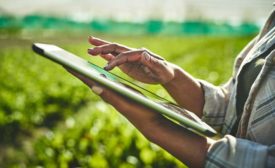Robert A. Norton Ph.D.
Robert Norton, Ph.D. is a Professor and National Security Liaison in the Office of the Vice President of Research and Economic Development at Auburn University. He specializes in national security matters and open-source intelligence, and coordinates research efforts related to food, agriculture, and veterinary defense.
ARTICLES
While ransomware is the most common cyberattack vector for businesses, other cyber threats can be far more dangerous to the food supply system
Read More
What Exactly is "Information Sharing?"
Threat information should be disseminated as rapidly as possible, and is encouraged between businesses that may otherwise be restricted by anti-competitive laws or regulations
June 12, 2023
Cybersecurity and Food Defense: Establishing an ISAC for the Food and Agriculture Sector
With security threats on the rise, an Information Sharing and Analysis Center (ISAC) is needed for the food and agriculture sector
April 10, 2023
An Information Sharing and Analysis Center for the Food and Agriculture Sector
The food and agriculture sector is the only U.S. critical infrastructure without a threat Information Sharing and Analysis Center (ISAC)
February 6, 2023
Cyber as a Vital Element in Comprehensive Food Safety and Defense Programs
Food safety professionals must be aware of new challenges and vulnerabilities
June 10, 2022
COVID-19, the Food Supply, and Cybersecurity: Coalescing Concerns
COVID-19 dramatically disrupted the food supply, but we must be prepared to tackle new kinds of disruptions in the future.
February 16, 2022
View All Articles by Robert A. Norton Ph.D.
Never miss the latest news and trends driving the food safety industry
eNewsletter | Website | eMagazine
JOIN TODAY!Copyright ©2025. All Rights Reserved BNP Media.
Design, CMS, Hosting & Web Development :: ePublishing










